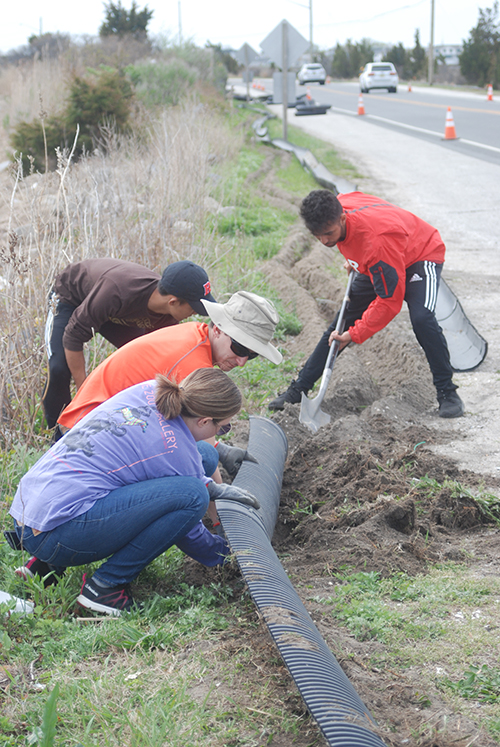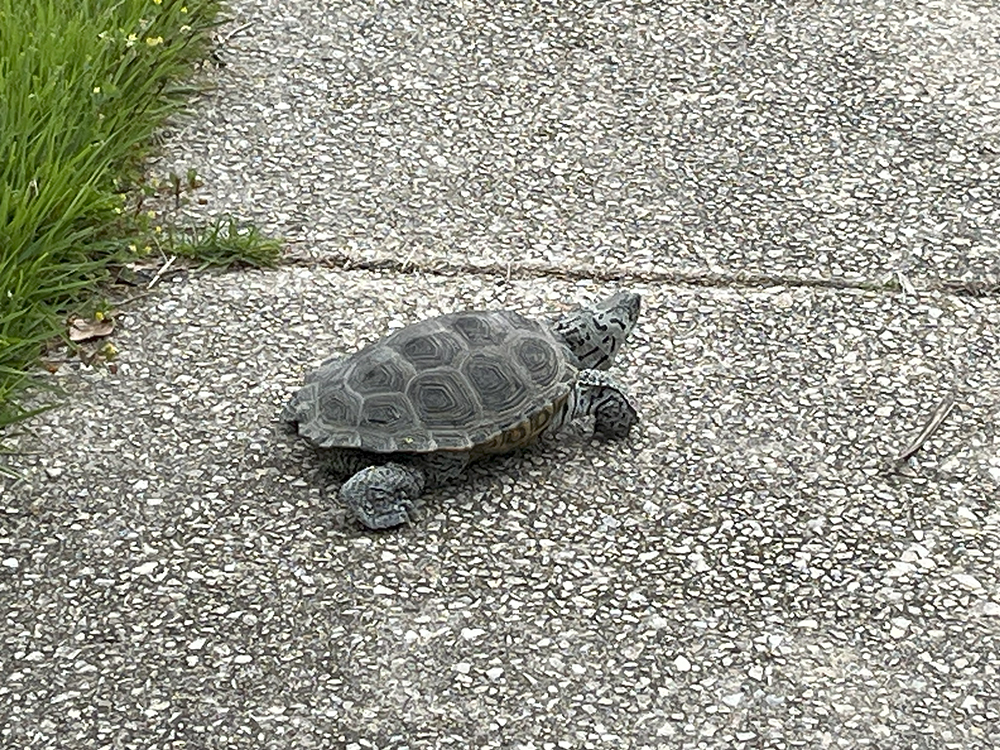By Steffen Klenk
Living in South Jersey means being surrounded by a diverse ecosystem. Our backyard is home to some of the most unique species of wildlife you won’t find in many other places. The diamondback terrapins are beginning to re-appear ahead of a busy nesting season, and work has been underway to ensure their safety.
Last month, the Margate Terrapin Rescue Project worked diligently to repair and replace roadside barriers along the Margate Causeway. Kimberly Weich says that 43 volunteers, including members of the Mainland National Honor Society and other high school students, assisted in the day’s efforts. “We had to retrench several twenty-foot sections of split barriers and put them back into place,” Weich said.
According to the Rescue Project’s website, the group is dedicated to conserving the local diamondback population through various initiatives, daily road patrols and education outreach.

Diamondback species can be found up and down the Eastern Seaboard and along the Gulf states. Their diet mainly consists of hard-shelled crustaceans such as clams, aquatic snails, and blue mussels. Their most notorious predators include foxes, raccoons, and shorebirds. Turtle eggs and small hatchlings are most vulnerable to encounters with other wildlife, including land and sea creatures. They also keep other ecosystems in check, such as periwinkle, a perennial plant that can decimate salt marsh grass.
In recent years, the organization has received several calls from individuals who have seen diamondback terrapins but may misidentify the species for sea turtles. Weich stresses the importance of keeping the species in its natural environment. “We don’t want to drop them off on the beach or take them home and keep them as pets,” she said.
Terrapins begin mating as early as March. In early to mid-June, the female will start looking for a spot to nest her eggs. When she finds a spot that is most suitable, she will dig a hole with her back feet and lay her eggs upwards of three clutches, containing anywhere from four to 20 eggs at one time. The nesting period typically lasts well into the summer.
During nesting season, adult female terrapins will attempt to cross roadways in search of nesting sites. Unfortunately, these turtles are most prone to getting struck by fast-approaching vehicles. Terrapins are also at risk of habitat destruction due to coastal development, particularly salt marsh draining, loss of sand dunes, and coastal waterway use.

Along the barrier islands and back bay communities, you may notice turtle crossing signs. Terrapins usually travel to spread their habitat, lay eggs, or find a mate. Conservation efforts are ongoing to ensure the species’ survival and safety. For populations to thrive, turtles must live a long time and lay more eggs.
The Wetlands Institute in Stone Harbor is actively involved in helping conserve the diamondback terrapin species, installing more than 11 miles of barrier fencing along roads bordering salt marshes in and around Cape May County. Road patrols have also been seen in various communities monitoring terrapin activity.
In recent months, the organization has been stepping up its conservation efforts thanks to a grant from the Northeast Association of Fish and Wildlife Agencies. The study will monitor the movements of the diamondback terrapin population along open bay and coastal salt marsh systems, filling important gaps that will improve understanding of the species’ distribution and aid in their protection.
If you spot a diamondback terrapin attempting to cross the road, the Wetlands Institute recommends slowing down and waiting for the terrapin to cross or carefully carrying turtles across the road in the direction it is already heading. The female terrapins may be carrying eggs, so be gentle. Be sure not to carry terrapins over long distances as their internal GPS, or homing senses, are short range.
For those interested in learning more, there are useful tips and information available via the Wetlands Institute’s website at the following link: https://wetlandsinstitute.org/conservation/terrapin-conservation/terrapins-what-to-do/. Additional information and resources can also be found by visiting the Margate Terrapin Rescue Project online at www.margateterrapinrescue.org.
Photos by Steffen Klenk
Steffen Klenk is a photographer and multimedia journalist who enjoys capturing the eclectic moments of shore life. You may contact Steffen at shorelocalsteffen@gmail.com.










